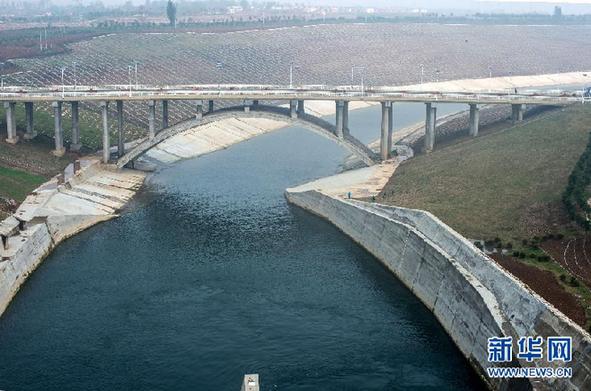Water from afar can't quench thirst
- By Liu Xueming andLi Xiaokai
 0 Comment(s)
0 Comment(s) Print
Print E-mail China Daily, December 5, 2014
E-mail China Daily, December 5, 2014
|
|
|
The South-North Water Transfer Project [Xinhua] |
Amid euphoria and fanfare, water from the $40-billion middle-route of the gigantic South-North Water Transfer Project is set to reach Beijing in a matter of days. For the parched Chinese capital, which is in the same league as Saudi Arabia in terms of per capita water availability, this event is worth more than celebration.
Nevertheless, the water transferred from the south of the country is far from adequate to make Beijing water-secure, let alone the vast arid expanses of North China. China as a whole is a water-stressed country, with per capita water resources of some 2,100 cubic meters which is less than one third of the global average. The dire state of water shortage is worsened by the mismatch of spatial and temporal distribution of water sources with the distribution of population and arable land.
North China is home to half the nation's population and two-thirds of its farmlands. However, with only one-fifth of water sources, this region happens to be the most water-scarce region in China, where water has become a major constraint to socio-economic development. With climate change becoming more evident, precipitation patterns and distribution are anticipated to be much more uneven and uncertain with higher evaporation. These factors will likely aggravate the existing critical water scarcity in the North. The situation has also been exacerbated by degradation of eco-systems from the over-exploitation of water sources.
It is high time policymakers recognized that in the context of declining available water sources as demonstrated in the past decades, particularly during consecutive drought years, and from increased demand for water generated by agricultural, industrial and urban growth, supply side efforts may have well reached their limits.
Unfortunately, demand side solutions have not received as much attention as they deserve. Despite the glaring scarcity of water, its economic value has been grossly discounted in both agricultural and industrial production. Owing to irrational allocation and low pricing, the big water users, agriculture and industries, are not sensitive to the value of water utilized, resulting in the outrageous waste and low water productivity.






